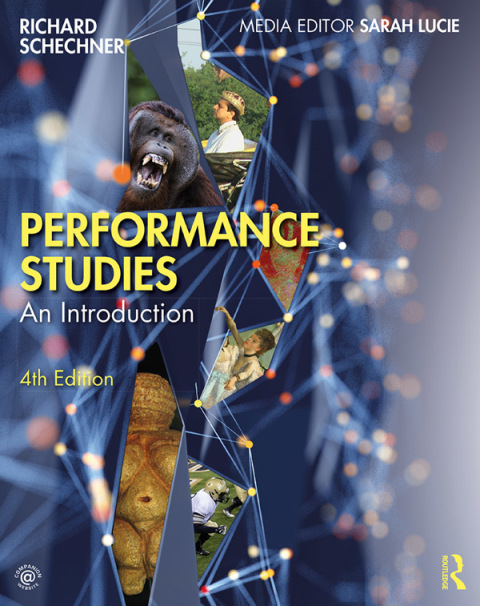Description
Efnisyfirlit
- Cover
- Half Title
- Title Page
- Copyright Page
- Dedication Page
- CONTENTS
- Preface
- Acknowledgements
- Margin icons
- 1 WHAT IS PERFORMANCE?
- Introducing this book, this field, and me
- The boxes
- Defining performance
- The nine kinds of performances
- Restored behavior
- Caution, beware of generalizations
- As/is performance
- Make believe/make belief
- Blurry boundaries
- The seven functions of performance
- As/is and the broad spectrum, again
- Conclusions
- 2 WHAT IS PERFORMANCE STUDIES?
- Confounding categories, blurring boundaries
- Performance studies here, there, and everywhere
- Antecedents to performance studies
- The Victor Turner connection
- Ethical and political questions
- Conclusions
- 3 PERFORMANCE PROCESSES
- The performing arts as a model
- Performance process as a time-space sequence
- Rules, proto-performance, and public performance
- The performance quadrilogue
- From montage to virtual reality
- Experimental in one context, ordinary in another
- Conclusions
- 4 THE BROAD SPECTRUM OF PERFORMANCE
- From nonmatrixed performing to complex acting
- Realistic performing
- Brechtian performing
- Codified performing
- Codified performing and the avantgarde
- Ritualists, charisma, and presence
- Puppets and masks
- Hybrid performing
- Performing in everyday life
- Trials and executions as performance
- Surgery as performance
- Belief in the role one is playing
- How realistic is realistic acting?
- Conclusions
- 5 RITUAL
- Sacred and secular
- Human and animal rituals
- Trance
- Trance and shamanism
- Rites of passage, liminal, liminoid
- Communitas and anti-structure
- Ritual time and space
- Transportations and transformations
- Asemo’s initiation
- Social drama and ritual process
- The pig-kill at Kurumugl
- The efficacy-entertainment dyad
- Origin of performance: if not ritual, what?
- Changing rituals or inventing new ones
- Using rituals in theatre, dance, and music
- Conclusions
- 6 PLAY
- The joker in the deck
- What is play? What is playing?
- Play and games
- Seven ways to approach play
- Types of playing
- Play acts, play moods
- Flow, or experiencing playing
- Transitional objects, illusions, and culture
- Animal play
- The message, “this is play”
- Bateson’s Othello
- Blood games, blood rites
- Philosophies of play
- The bias against play
- Maya–lila
- Deep play, dark play
- Conclusions
- 7 PERFORMING IN THE PALEOLITHIC
- What is the paleolithic?
- Where is the art, and how old is it?
- Is it art?
- What was the cave art for?
- Vulvas, “venuses,” hybrids, women artists
- Performing in the caves
- Shamanic vision-quests
- Paleoperformance
- Lascaux online and replicated onsite
- Conclusions
- 8 PERFORMATIVITY
- A term hard to pin down
- Austin’s performative
- Speech acts
- From Survivor to EarthCam
- Postmodernism
- Simulation
- Poststructuralism/deconstruction
- The diffusion of poststructuralism
- Problems with poststructuralism
- Constructions of gender
- Constructions of race
- Performance art
- What the Gravedigger knew about the performative
- Conclusions
- 9 SOCIAL MEDIA
- Up, up, and away
- When and what?
- The network society
- Performing you on social media
- Second self or augmented self?
- The importance of interests
- From Goffman to web 2.0
- Big business, fake news, war
- POTUS @realDonaldTrump
- Change by means of social media
- Social media and the arts
- Conclusions
- 10 INTERCULTURAL AND GLOBAL PERFORMANCES
- Globalization’s throughline
- Intercultural performances
- Vertical performances
- Horizontal performances
- Fusions and hybrids
- Colonial mimicry and importing
- Applied performances
- Terrorist acts as applied global performances
- Tourist performances: leisure globalization
- Border wars
- The Olympics: globalism’s signature performance
- Conclusions
- Bibliography
- Index






Reviews
There are no reviews yet.